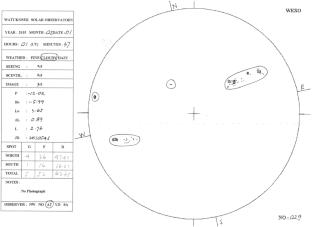Differential Rotation of Long-Lived Sunspot Groups in Solar Cycles 22 – 24 Determined by Watukosek Solar Observatory Data
Abstract
Solar differential rotation (SDR) profile can give an important clue on how the solar dynamo varies from one solar cycle to another. In order to investigate the variability of SDR across multiple solar cycles, we calculated rotation rates of sunspots observed in Solar Cycles 22 – 24 (1987 – 2019) by using sunspot data records from the Watukosek Solar Observatory (WKSO). WKSO has the longest continuous sunspot observation record in Indonesia. Its historical record of sunspot observations provides a unique and valuable dataset for solar physics research. In this paper, we introduced the repository of sunspot observations from WKSO for almost three solar cycles. Using these data, we calculated the rotation rate of each long-lived sunspot group during Solar Cycles 22 – 24 by measuring the linear least-square fitting of daily movements of the sunspot position in various latitudes. The results confirm the well-established pattern of SDR, with a faster rotation at the equator compared to higher latitudes. We also found that the rotation rates of long-lived sunspot groups are slower than the differential rotation rates derived from the entire sunspot data. Furthermore, our analysis of this dataset confirmed that the bipolar sunspot groups rotate faster than unipolar sunspots. These results suggest that unipolar and bipolar sunspots are anchored at different depths beneath the solar surface. These findings are consistent with prior results using older data from different observatories, suggesting the reliability and scientific importance of the sunspot observations from WKSO for understanding solar-dynamo processes and their variability.


 求助内容:
求助内容: 应助结果提醒方式:
应助结果提醒方式:


